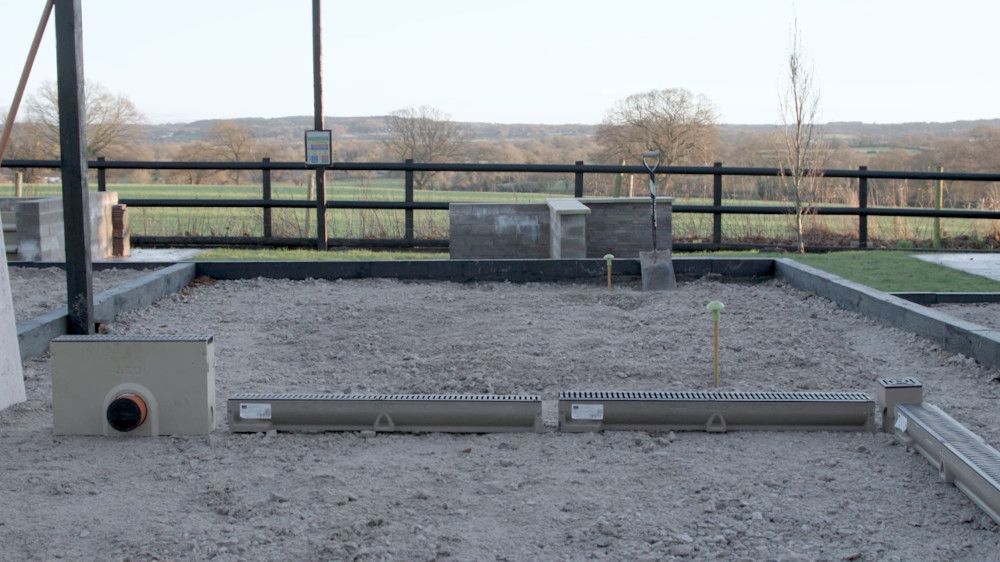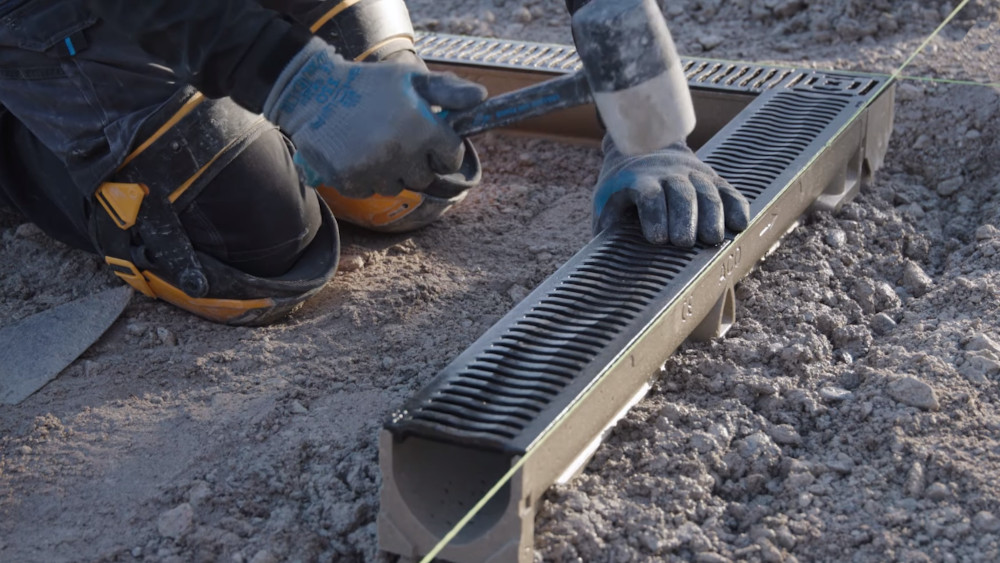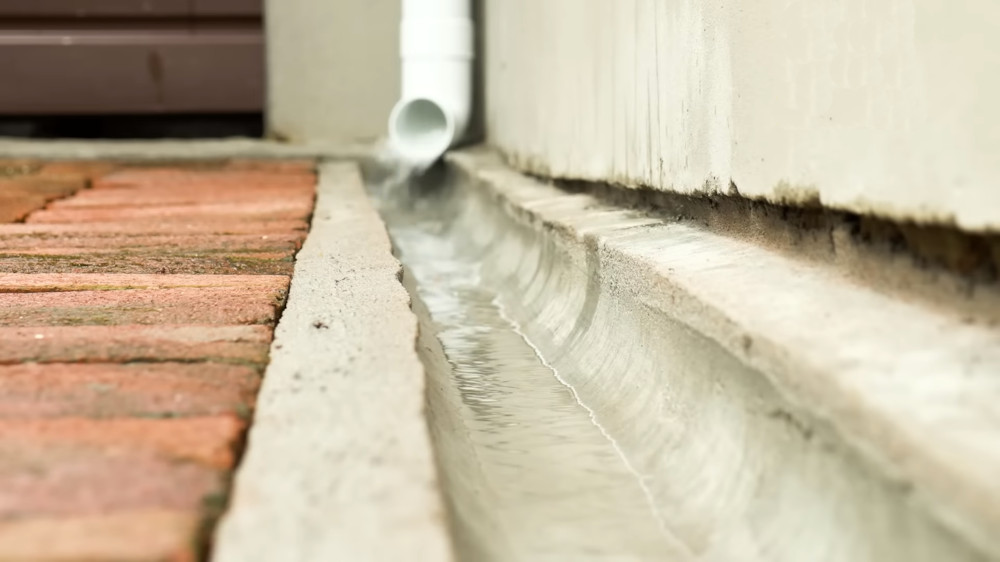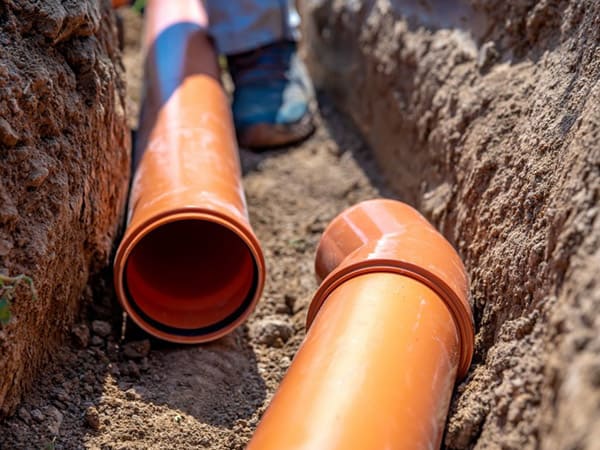Driveways and parking areas are vital components of a property, providing accessible, safe, and practical spaces for vehicles. In New Zealand, where heavy rains and fluctuating weather conditions are common, proper drainage in these areas is essential. Effective drainage systems prevent water buildup, reduce erosion, and extend the lifespan of your driveway or parking area, ultimately saving you from costly repairs. In this post, we’ll explore the importance of driveway drainage, the potential problems caused by poor drainage, types of drainage systems, and how to choose the right solution for New Zealand’s unique climate and landscape.
The Importance of Driveway Drainage
Water may seem harmless, but when it collects on driveways and parking areas, it can cause extensive damage. Without a proper drainage system, rainwater can pool and seep into the ground, causing erosion, surface cracking, and even structural damage to nearby buildings. By installing a suitable drainage solution, you can avoid these risks and protect the value of your property.
In New Zealand, where properties often contend with varied terrain, high rainfall, and proximity to coastlines, proper drainage systems are even more critical. Drainage systems help redirect water away from your driveway and parking area, ensuring that rainwater and runoff do not disrupt your property or the surrounding environment.
Potential Problems from Poor Driveway Drainage
Poor drainage can cause several problems for driveways and parking areas, many of which can escalate quickly if left unaddressed. Here are some of the most common issues that can arise from inadequate drainage:
- Water Pooling
Standing water on a driveway is more than just an eyesore; it can become a safety hazard. Pooled water can turn into ice during winter, making driveways and parking areas slippery and dangerous. Over time, stagnant water can also lead to deterioration of surface materials, especially if they’re porous. - Surface Erosion and Potholes
Without adequate drainage, water can wash away the soil and gravel beneath your driveway or parking area, leading to erosion. This weakens the structure, eventually causing cracks and potholes. In extreme cases, the lack of a solid foundation can make the entire surface unstable, requiring extensive repairs. - Cracking and Heaving
Water trapped beneath the driveway’s surface can expand and contract with temperature changes, causing cracks and heaving. Over time, this can lead to unsightly damage and increase the need for costly repairs or replacement. - Damage to Adjacent Structures
Poor drainage doesn’t just affect driveways and parking areas; it can also impact nearby structures. Excess water may seep into the foundation of nearby buildings, causing mold, mildew, and structural damage. Driveway drainage systems can help prevent water from reaching these areas. - Environmental Impact
Inadequate drainage can lead to erosion and runoff issues that negatively impact surrounding soil, vegetation, and waterways. Implementing a proper drainage system helps minimize the environmental impact of your property’s hard surfaces, contributing to better stormwater management in your community.

Types of Driveway Drainage Solutions
There are several drainage solutions available for driveways and parking areas. Choosing the right system depends on factors like the size of the area, the type of surface material, and the slope of the landscape. Here are some of the most common types of driveway drainage systems used in New Zealand:
- Surface Drains
Surface drains, such as channel or trench drains, are installed along the edge of the driveway or parking area to capture surface water. These drains are ideal for paved driveways and can handle large volumes of water, directing it into a drainage system or away from the property. Grated channels are commonly used in residential driveways as they blend well with the surface while effectively removing water. - French Drains
French drains are subsurface drainage systems that consist of a gravel-filled trench with a perforated pipe. They are particularly useful for gravel or stone driveways where surface drains might not be practical. French drains help move water away from the surface and into a designated drainage area, preventing pooling and erosion. - Permeable Driveway Materials
Permeable driveway materials, such as porous concrete, asphalt, or permeable pavers, allow water to pass through the surface, reducing runoff and pooling. These materials are especially effective in flat areas with high rainfall, as they enable water to flow naturally into the soil below. - Swales
Swales are shallow, vegetated channels that guide water away from driveways and other surfaces. Swales are effective in large properties or areas with significant slopes. By allowing water to naturally flow along a designated path, swales prevent erosion and support groundwater recharge. - Dry Wells
Dry wells are underground storage systems that collect water from surface drains, allowing it to percolate slowly into the soil. These are useful in areas with limited space for traditional drainage systems and are often used in conjunction with surface or French drains for added capacity.
Choosing the Right Drainage System for New Zealand Conditions
Selecting the best drainage system depends on the unique characteristics of your property and New Zealand’s varied climate. Here are some considerations for choosing the right system:
- Climate and Rainfall: New Zealand’s climate varies significantly by region, with high rainfall on the West Coast and drier conditions in the east. Choose a drainage system that can handle the intensity and frequency of local rain.
- Soil Type: The permeability of your soil affects how well it absorbs water. In areas with heavy clay soils, subsurface drains and permeable materials may be more effective, as clay retains water and prevents drainage.
- Slope and Elevation: Sloped driveways require more robust drainage solutions like French drains or channel drains to guide water away effectively. Flat driveways can benefit from permeable materials that allow water to seep into the ground.
- Environmental Considerations: Choose systems that minimize environmental impact by managing runoff and supporting groundwater replenishment. Sustainable drainage solutions help protect New Zealand’s landscapes and waterways.
Steps to Maintain Your Driveway Drainage System
A well-maintained drainage system can significantly extend the lifespan of your driveway or parking area. Here are some tips for keeping your system in top shape:
- Regularly Clear Debris
Leaves, dirt, and debris can block drains, reducing their effectiveness. Make it a habit to clean out surface drains, swales, and grates, especially after heavy rain or during seasonal changes. - Inspect for Clogs and Damage
Inspect your drainage system regularly for signs of clogs, cracks, or damage. Addressing these issues early can prevent more extensive damage. - Adjust Grading and Slope if Needed
Over time, erosion or shifting soil can alter the grading around your driveway. Ensure the slope continues to direct water toward drains or runoff areas. - Check Permeable Materials for Wear
If you’ve installed a permeable driveway, check for areas that may need replenishing or replacement. Adding fresh aggregate or replacing worn pavers can help maintain effective drainage. - Maintain Vegetated Areas
For drainage systems that include swales or plantings, ensure vegetation is healthy and trimmed. This supports soil stability and encourages proper water flow.
Benefits of Professional Drainage Installation
While DIY drainage systems are possible, professional installation offers long-term value and peace of mind. Certified drainage experts understand the complexities of New Zealand’s climate and soil, ensuring a system that effectively meets your property’s needs. Professional installation also reduces the risk of future repairs and ensures compliance with local regulations.
Conclusion
Proper drainage is essential for protecting driveways and parking areas from water damage and erosion. Whether your property faces heavy rains, seasonal flooding, or challenging slopes, investing in a suitable drainage system can help maintain the integrity and functionality of your driveway for years to come. From surface drains to French drains and permeable materials, there’s a solution that will work for every New Zealand property.
Protect Your Driveway with Real Drainlayers
At Real Drainlayers, we specialize in effective and durable drainage solutions tailored to New Zealand’s unique conditions. Contact us today for a consultation and let us help you find the right drainage system for your driveway or parking area. Safeguard your property with a professionally installed drainage system from Real Drainlayers.
In New Zealand, where rain can be heavy and unpredictable, effective drainage is vital for homeowners to protect their property and prevent water damage. But with various drainage solutions available, many property owners face the dilemma of choosing between surface and subsurface drainage systems. Each has its unique role and advantages, and selecting the right one depends on your landscape, soil type, and drainage needs. In this comprehensive guide, we’ll explore the key differences between surface and subsurface drainage, and provide insight into which solution may best suit your property.
Understanding Surface Drainage
Surface drainage is designed to remove excess water from the ground's surface, typically after heavy rains or storms. Surface drainage solutions are visible, as they involve trenches or channels that collect and redirect water away from the property. Some examples of surface drainage include:
- Swales: Grassy or gravel-filled depressions that channel water away from your property.
- Open ditches: Trenches dug to move water quickly off-site.
- Runoff channels: Channels that lead water away to a designated drainage area.
Benefits of Surface Drainage
- Prevents Pooling on the Surface
Surface drainage is ideal for quickly removing water that accumulates on top of the ground. This can prevent flooding, reduce the risk of mud build-up, and keep your lawn, driveway, and other areas dry. - Cost-Effective Solution
Surface drainage systems generally require less installation work and are therefore less costly than subsurface options. For New Zealanders looking for a budget-friendly option to tackle mild drainage issues, surface drainage could be the answer. - Easy Maintenance
With visible components, surface drainage systems are easy to access and maintain. Blockages can be spotted and cleared quickly, making upkeep relatively simple. - Reduces Soil Erosion
In regions prone to erosion, surface drainage can help channel water in a way that minimizes soil loss, preserving the integrity of your property.
Drawbacks of Surface Drainage
- Less Effective in Deep Saturation: Surface drainage works well for excess water on the ground, but it’s not effective for deeper saturation levels.
- Aesthetics: Surface drainage components can sometimes detract from the landscape aesthetics, although strategic planning and decorative finishes can help.
Understanding Subsurface Drainage
Subsurface drainage, on the other hand, is designed to remove water that has already seeped below the ground’s surface. This system involves buried pipes or drains that capture water deep within the soil and direct it away from the area. Common subsurface drainage options include:
- French drains: Perforated pipes surrounded by gravel and buried underground to capture and redirect groundwater.
- Drain tiles: Typically used around foundations, drain tiles capture water that seeps close to the structure.
- Sump pumps: Installed to pump groundwater from basements or other low areas in the property.
Benefits of Subsurface Drainage
- Prevents Waterlogging and Soil Saturation
Subsurface drainage removes excess water deep within the soil, which can prevent waterlogging in gardens, lawns, and around foundations, ensuring healthier plant growth and structural integrity. - Protects Foundations
Water that sits too close to a building’s foundation can cause major structural issues over time. Subsurface drainage systems help prevent such damage, especially important in New Zealand’s rainy regions. - Aesthetic Appeal
Since subsurface systems are buried, they don’t impact the look of your landscape. They provide efficient drainage without detracting from the aesthetics of your property. - Improves Soil Health
By regulating soil moisture levels, subsurface drainage promotes healthy soil conditions, which can improve root growth and reduce plant diseases.
Drawbacks of Subsurface Drainage
- Higher Installation Costs: Installing subsurface drainage is often more labor-intensive and therefore more expensive.
- Maintenance Challenges: Because these systems are buried, it can be challenging to locate and repair any blockages or damages.
Surface vs. Subsurface Drainage: Which One Do You Need?
When deciding between surface and subsurface drainage, consider the specific conditions and needs of your property.
Assess Your Property’s Landscape
If your property has a relatively flat landscape, surface drainage can effectively divert water. However, for properties with slopes or where water tends to pool in low areas, subsurface drainage may be a better solution to manage groundwater and prevent saturation.
Evaluate Soil Type
The type of soil on your property plays a key role in determining the best drainage system. Sandy soils, which drain naturally, may only require surface drainage for rainy periods. Conversely, clay-rich soils tend to retain water and could benefit from subsurface drainage to prevent waterlogging and soil compaction.
Consider Your Vegetation Needs
Surface drainage works well for areas with lawns and shallow-rooted plants, as it effectively manages surface water without disrupting the soil beneath. For deeper-rooted vegetation, subsurface drainage ensures that water doesn’t saturate the soil, promoting healthier growth conditions.
Budget and Aesthetic Preferences
Surface drainage systems are generally more budget-friendly, while subsurface systems offer a discreet, underground solution. If you’re concerned about the appearance of visible drains or channels, subsurface drainage may be the right choice.
Combining Surface and Subsurface Drainage Systems
For many New Zealand properties, the best drainage solution combines both surface and subsurface systems. This dual approach provides comprehensive water management that addresses both surface runoff and deep soil saturation. By implementing a hybrid drainage system, you can:
- Maximize water diversion: By tackling both surface and subsurface water, you reduce the risk of waterlogging and pooling.
- Enhance property resilience: Combining both systems helps protect your landscape, plants, and structures.
- Reduce maintenance costs: With water managed more effectively, you may experience fewer issues with blockages, soil erosion, and other maintenance needs.
Choosing the right drainage system is crucial to maintaining a functional, beautiful, and resilient property, especially in New Zealand’s rainy climate. Whether you’re considering surface drainage, subsurface drainage, or a combination of both, Real Drainlayers has the expertise to assess your property and install the ideal solution. Contact us today to learn how we can protect your landscape and property from water damage with a customized drainage solution tailored to your needs.



